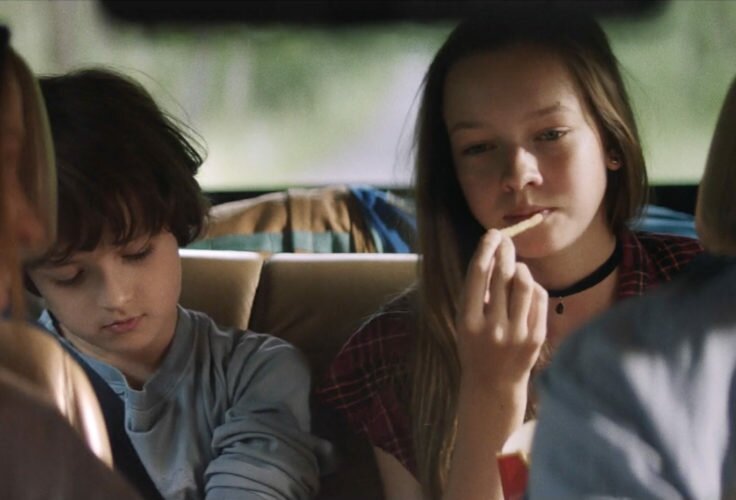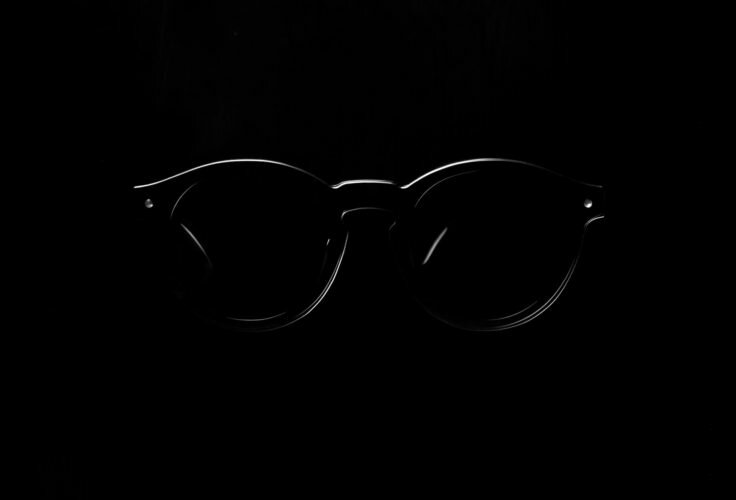Was Cervantes against the system? Was he a libertarian? Is Cervantes an empty symbol we can give any meaning we choose? Jaime Gonzalo finds out.
Can: krautrock titans that come back to the spotlight both for sad (Jaki Liebezeit died) and happy (a tribute concert in London) reasons. Jaime Gonzalo, at their feet.
TEXT BY
JAIME GONZALO
the
philosopher’s
rock

Can, the most advanced European rock band of all times –and that’s quite something–, ended their career in 1979, after eleven years of fruitful activities. Incessantly transmitted through several generations of musicians and audiences, their mark in the collective imagination hasn’t but increased since then. To the point that they have even become now T-shirt material, and several groups of modern youngsters have taken to citing them and the genre they theoretically belong to, krautrock or German rock. Beyond that clear influence that challenges time and oblivion, beyond retroactive gullibility, their renounce to their physical permanence didn’t prevent the band to reappear every now and then, in 1986, 1988 –giving way to a last official album, Rite Time–, 1991 –giving a for the soundtrack of Wim Wender’s Until the End of the World– and 1999, with the Can Solo Projects tour, with each band member playing separately, heading the projects they lead at the moment.
A new coming is previewed for next April 8th at the Barbican Centre in London. Under the name The Can Project, three of their original members will celebrate with this concert the band’s fiftieth anniversary. On the first part, the London Symphony Orchestra will interpret the orchestral piece An Homage to Can, revising extracts of their best-known songs. On the second, with Sonic Youth’s Thurston Moore and Steve Shelley, and of other invited artists the identity of whom hasn’t been revealed yet, the surviving members of Can will reform in a sort of postmodern super band.
The recent demise of Jaki Liebezeit, Can’s drummer and one of its most protuberant identity sings, hasn’t been an obstacle for a commemoration that in any case, except for sentimental reasons, will be able to do little for an already fully established legend, and kept alive through the mediation of different channels: the constant re-edition of their work and the thoroughness with which their archive has been revisited; the presence of their songs in soundtracks such as The Bling Ring, Life After Beth, Inherent Vice y High Rise; the many samplings their records are still victims of; two books on their history, or four, should we count the two new volumes to be soon published by Faber & Faber. Even The New York Times cited them in Bowie’s obituary, understood with Kraftwerk and Neu! as being among the interests of the Thin White Duke during his Berlin years.
Without mentioned the covers of their songs that keep on piling up everywhere –Radiohead’s version of , for instance–, another factor to contribute to that perpetuation of the Can legacy has been the indefatigable activity of their members –except guitar player Michael Karoli, who died in 2001– in the 21st century, although in no case they have surpassed their past feats; be it making use of Can’s legacy, like singer Malcolm Mooney reviving the LP Monster Movie, or taking advantage of the myth’s momentum to sell dubious shows the biggest appeal of which is the origin of their protagonist, as happens with Damo Suzuki, second Can singer. More profitable have been the careers of Liebezeit, bass player Holger Czukay and keyboard player Irmin Schmidt. The last one, author of an opera and collaborator of Kumo, ever present in own and others’ soundtracks, like the one written by Thurston Moore for Street, that both interpreted together last May at the Louvre Museum.


FROM
DENAZIFICATION TO
PANEUROPEISM
Even though Julian Cope, Mark E. Smith and John Lydon had already blessed them before (and Tim Gane, Adrian Utley and James Murphy after), it would be the head of the disappeared Sonic Youth, precisely, who would officialise the “modernization” of Can by quoting them among his influences, coinciding with nineties revalidation of krautrock, experimental genre up to them reserved to minorities and frequently dismissed. What a paradox, that appreciative aggiornamento, since both kraut and Can never ceased to be modern for those who knew how to listen to them. The death of Liebezeit, a unique percussionist, irreplaceable, makes any future resurrections of the band –or of the shadow of the band– unthinkable, but still, talking about Can in the past tense sounds ironic.
It isn’t easy to explain the permanence of a sound, theirs, that, random, unpredictable, exclusive, still presents many mysteries. The more you listen to Can, the bigger is the intrigue they provoke. What makes them so special is the one million dollar question. We will try to answer it here. Like the most representative kraut bands, Can was the consequence of the denazification process, or of capitalist imperialism, suffered by Germany after the war, which disarmed great part of the German culture before the Reich, giving a new sense to the Entartete Kunst. The Information Control Division, part of the Psychological Warfare Division of general Robert McClure, promoted among the German musical community the spreading of what in an intern memorandum he described as “modern music of the international repertoire,” put into practice thanks to Olivier Messiaen, Pierre Boulez, John Cage and Luciano Berio, among other international avant-garde composers.
To that end, the city of Darmstadt, where in 1946, a year after the war ended, had been founded the Internationale Ferienkurse für Neue Musik, summer courses on contemporary music popularly know as the Darmstadt Festival, received economic funds as part of the “reorientation” programme financed by the US military complex in order to weave a net of patronage by commissioning those denazified musicians a variety of paid jobs that went from teaching to institutional positions, radio programmes and other instances of ideological servility.
One of those musicians expurgated from the shadow of Nazism and student of the so-called Darmstadt school, the most influential for the rock and pop worlds, Karlheinz Stockhausen, was thus allowed to study electronic music in the Nordwestdeutscher Rundfunk, public radio with headquarters in Cologne. There, Czuckay and Schmidt, two cultivated music students, attended his seminars. Upon the return of the second from a student trip to New York in 1966, where he met La Monte Young and Terry Riley, but also Fluxus, Warhol and The Velvet Underground, fascinated by the electric rhythms and tired of the strict doctrines of the Neue Musik, Schmidt devoted himself in to fusing avant-garde and rock in a band based on spontaneity, the destine of which seemed unknown even for its members.



“THAT THERE
BE KRAUTROCK!”
said JOHN PEEL
Can were already an anomaly due to their age and to the academic origin of their members. Schmidt, Czukay and the free jazz drummer Liebezeit, thirty-somethings that were too adult and cultivated for what were then rock conventions, arrived to the genre completely virgin, clean of any prejudices, devoid of any tic motions, determined to use the style as a research tool. With the incorporation of a twenty-year-old Swiss guitar player who came from beat, Karoli, Can was born, with no rules, no leader, no tags, looking for an unknown music, a true neue musik, intellectual and primitive, in which anything could –must– happen. This path towards the unknown wasn’t the exclusive patrimony of Can. A generation of young and restless musicians equally impregnated by the experimentalism cultivated in Darmstadt, psychedelia, jazz and Oriental music, was creating back then the German version of progressive rock, politically influenced by counterculture and May 68. In September that year, folk critic Rolf-Ulrich Kaiser joined the organization of the Internationale Essener Sontag, rock and underground music festival, cohesive instrument of that new progressive scene, and later in capitalised it by creating labels that, as Ohr and Cosmic Jokers, absorbed the most notable bands present in Essener or created them for the occasion.
An economic phenomenon, thus, the Federal Republic’s German rock saw its diversity and polychromy reduced to a unifying label, a bottomless sack determined by the good reception they got from Great Britain –and Germany and France, but never the US–, through Virgin imports and with the backing of John Peel, who coined the polemic krautrock nomenclature. Isolated in their provinces, executing different proposals, without any conscience of belonging to any current or movement, the only thing kraut bands had in common was the greater or smaller use of electronics and technology, their will to transgress, the need to escape from their social and historical past, the more or less obvious urge to react against Anglo-Saxon pop and rock patterns with which they had been bombarded since the fifties. Of that series of factors, in no case one could extract any kind of substantially German character, but still their sound was for some reason unmistakably Germanic, or at least European, which was the cause both for their acceptation and rejection. This last case in Spain, where kraut didn’t become fashionable, it eventually did, until 1975, thanks to the international success of Tangerine Dream with Phaedra, Kraftwerk with Autobahn and even Neu! with maxi-single Hallogallo.
Can didn’t particularly benefit from that industrial situation, except for their participation in several soundtracks for the New German Cinema movement, summarised in their second work, Soundtracks. Too heterodox, their first album, Prepared To Meet Thy Pnoom, would be rejected by the music industry, and wouldn’t see the light of day until the band published an abridged version in Delay, already in 1981. Under the title Monster Movie, a most accessible version appeared in 1969 as a private edition of five hundred copies financed by a friend. A bit later it was re-released by United Artists in England, when the label signed Can and kept them during their most productive days.



STRETCHING
THE LISTENER’S
IMAGINATION

In those first two years, the fundamental features of Can are settled. Both Delay and Monster Movie are the scene of an idiosyncratic post-psychedelic and funkoid garage rock, with still recognizable Anglo-Saxon influences, but different through their colossal expressivity. Structured improvisations, their songs are propelled by the ecstatic rhythms devised by Liebezeit and vocalist Malcolm Mooney, an Afro-American sculptor from New York, feverish and temperamental proto-rapper, delirious automatic narrator that conditions the direction of the quintet; on some occasions predicting punk, on others generating pachyderm and repetitive monoliths such as , a tribal six-hour improvisation condensed in the twenty minutes occupied by Monster Movie‘s side B.
Crucial to give shape to their adventurous lucubrations, presumably generated in a lysergic state, the cut up or editing technique popularised by Burroughs will be Czuckay’s responsibility and it will be possible thanks to having their own studio, Inner Space, actually a basic two-track tape recorder installed at the premises of an old and isolated castle close to Cologne that a sponsor lets them use. Having unlimited time to experiment, and the miraculous results Czuckay obtains with the limited technical conditions by using the studio as an entity with its own life are key factors for the development of the Can sound. This will be defined completely between 1970-73, with the Inner Studio moved to an abandoned cinema in Weilerswist; Mooney exchanged for the Japanese Damo Suzuki, a globetrotter they discover singing in the street; the more and more numerous concerts; albums selling quite well and an increasing public exposure thanks to a single that manages to enter the German Top 10.
Despite being apolitical, Can considered themselves “an anarchist community, never a normal rock band” –among other meanings, their name responded to the acronym of Communism, Anarchy and Nihilism–, and that creative abnormality emulsified by adapting to the moment and circumstances. Again, Suzuki’s vocal features, more mystic than Mooney’s but as empathic with chaos, as accidental and sometimes undecipherable, will dictated the coordinates of an inspiration that reveal themselves as unstoppable in the three works produced during this period: double album Tago Mago Ege Bamyasi, and Future Days, the classic trilogy with which Can doesn’t only transcend kraut but the rock of their times, and of the future, up to today. Mostly recorded live at the studio, unfinished puzzles due to the possibilities they entail, listening to them now still produces the same trance of unknown origin intercepted in an alien wavelength. As expressed in The Can Book, the lack of a formula, what they referred to as “instant composition”, allowed the band to “formulate and manifest their music with rhythms, melodies and ambiences that could be beautiful, brutal, majestic, raw, sinister, transcendental, of a dimension only limited by the listener’s imagination.”
In other words, they projected their own universe, an organic continuum of great spiritual consistency, an intercultural fantasy fed with elements of very different procedures and execution. Exotic, enigmatic music, with a powerful sensuality. That universe won’t die with them. And this is not a forecast. In a world of fleeting musical sensations as today’s, one is flabbergasted to see that their work still generates unsuspected emotion. Magic, it lives its own life inasmuch as it is open to new interpretations and insinuations, hypnotising body, soul and brain. It’s not worn away. Such is the magnitude of its personality.
























